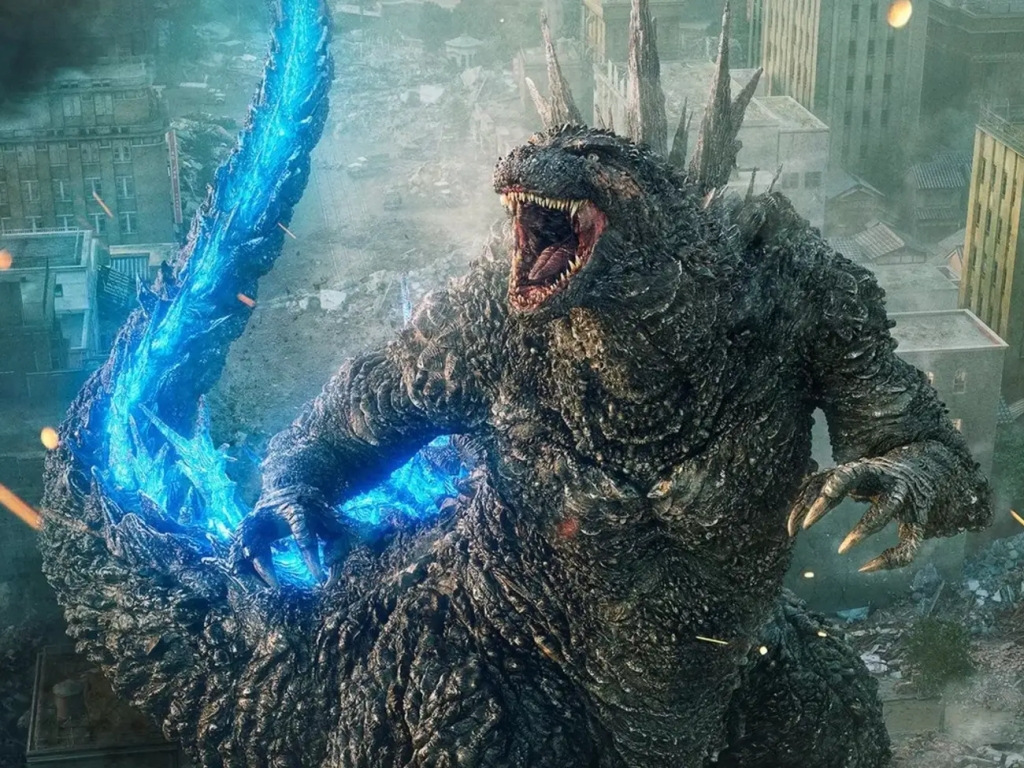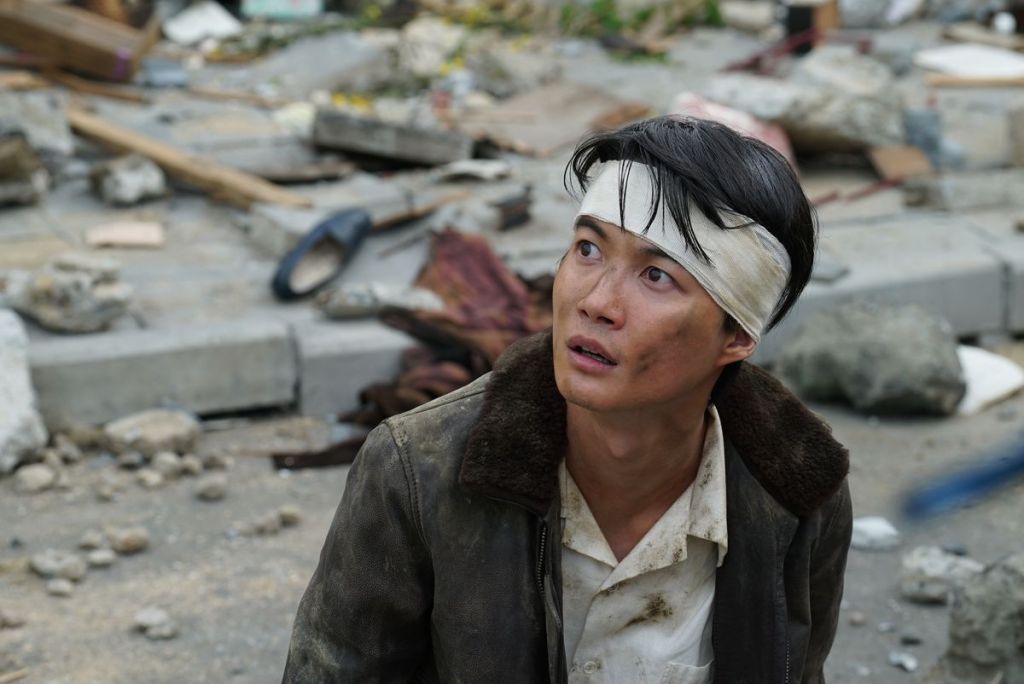Takashi Yamazaki is that rare director who has successfully directed both family dramas and big budget action spectacle. His 2005 heart-warming, nostalgia-driven 1958-set neighbourhood drama, Always – Sunset on Third Street won the Japanese Academy Award for best film. In 2013, he repeated the feat with The Eternal Zero, a film that delves into the life and motivation of a kamikaze pilot during World War II. In between, he brought to the big screen the much anticipated adaptation of the classic anime show Space Battleship Yamato, featuring a star-studded cast including veteran heartthrob Kimura Takuya. Yamazaki now becomes the latest director to tackle one of the oldest film franchises in the world – Toho Studios’ Godzilla.

Godzilla cinematic history
The Godzilla “brand” co-exists today in two parallel media franchises – the Japanese language series produced by Toho, and the English language Hollywood series produced by Legendary Pictures under license from Toho, and released worldwide by Warner Bros. Following a disappointing 1998 version directed by Roland Emmerich, the current Hollywood franchise was launched in 2014 with Gareth Edwards’ Godzilla, and subsequently has been mashed up with the King Kong character into a lucrative franchise dubbed the MonsterVerse, which now also includes an animated series on Netflix and a well-received live action series on Apple TV+.
The Japanese Godzilla films from Toho have been releasing almost continuously since the monster’s debut in 1954. The various on-screen incarnations have been classified into four different “eras”, Showa (1954-75), Heisei (1984-95), Millennium (1999-2004) and Reiwa (2016-present). The Reiwa era kicked off with the highly acclaimed Shin Godzilla and was followed by three anime feature length films (released 2017-18), before this much-awaited return to live action directed by Yamazaki, with the title Godzilla Minus One making it a reboot of the 1954 origin story.

Plot summary
The film is set in the aftermath of World War II and therefore represents a return to a familiar period setting for the director. Its main human protagonist is a navy pilot, Kōichi Shikishima (played by Ryūnosuke Kamiki, who started his career as a child voice actor on Studio Ghibli films). In the closing days of the World War II, Kōichi returns to an island airfield, unable to complete his kamikaze mission due to mechanical problems. When the mechanics check the plane, it emerges that Kōichi faked the trouble as an excuse to avoid death. Soon after, the outpost comes under attack from a horrifying dinosaur-like creature; Kōichi has the opportunity to kill it with his airplane’s machine gun, but is frozen with fear, and his fatal hesitation results in widespread death and mayhem. Overcome with shame, Kōichi returns to a ruined Tokyo, only to find that his parents have been killed in a bombing attack. With no family and no honour, Kōichi is at the end of his rope, when a chance occurrence leads to him providing shelter to a young widow and an orphaned infant. Over time, the three traumatized survivors form a cohesive family unit; Kōichi is recruited as a minesweeper and finally puts his gunnery skills to good use destroying unexploded wartime mines. He is able to support the widow and the little child, and seems well on his way to recovering his self-esteem and living out a comfortable life.
At this point, the fully grown creature appears off the Japanese coast, perhaps mutated by American nuclear tests in the Pacific Ocean. With the American navy reluctant to enter into military action for fear of ratcheting up the Cold War with the Soviets, its left to the Japanese navy to protect the nation. Kōichi’s minesweeper boat is called into action to support the navy, and their encounter with the creature, as it attacks naval vessels and subsequently lays waste to Tokyo, forms the central part of the film’s second act. A nation battered by war is now on its knees following the kaiju attack, and in the final act, it is left to a ragtag group of individuals to come up with a plan to destroy the monster. Drawn from both military and civilian backgrounds, the team brings together a wide range of skills and capabilities – engineering, naval strategy and undiluted courage – to take the fight to the monster.
Key characters and performances
What distinguishes this Godzilla film from its predecessors is director Yamazaki’s focus on the human characters, leading the audience to be heavily invested in the final outcome. For a kaiju film, there is an unusually large number of human protagonists that we are rooting for.
Kōichi’s partner (played by popular actress Minami Hamabe) is more than just a filler character. She is resourceful, financially independent and shows compassion and empathy as Kōichi grapples with his inner demons. Sae Nagatani as the little girl Akiko, is an endearing child actor and has a couple of emotional moments that tug at the heartstrings.
Kōichi’s minesweeper crew comprises a mix of character tropes that one would expect to see in an ensemble film – a brilliant and cheerful engineer with a mop of wild salt and pepper hair, a no-nonsense ship captain whose brusque exterior hides a heart of gold, a sincere crewman whose courage saves the day at a critical moment and a reliable technician who works around the clock to deliver the equipment in the nick of time.
Another notable character is Kōichi’s neighbour, Sumiko, a brusque woman who initially harangues Kōichi for his cowardice but thereafter emerges as a critical pillar of support. Played by a de-glamorized Sakura Ando, she has a particularly endearing scene towards the end, delivering an important piece of news to Kōichi, and unable to manage her own emotions.
This brings me to the performance of Ryunosuke Kamiki as Kōichi Shikishima. An actor of diminutive stature, Kamiki brings a controlled and underplayed intensity to his role, successfully portraying a man who constantly lives with a sense of shame, unable to erase the memory of his past cowardice. At the end of the film, his outpouring of suppressed emotion when he redeems himself is indeed heartwarming.
The evolution of Godzilla from Toho to Hollywood and back
Long time Godzilla fans will be familiar with its various onscreen representations in Japanese and Hollywood productions.
The original Japanese films of course, had the kaiju played by a man in a rubber suit, with a tiny head, googly eyes, an upright stance and “thunder thighs”. That look has largely remained unchanged across the first three eras, with the creature played by a man in a suit even into the 21st century; minor tweaks include the eyes getting smaller and the dorsal plates becoming bigger.
In contrast, the much reviled 1998 Hollywood CGI version reimagined Godzilla as a slinky T-rex with an evil grin. The 2014 Hollywood revival consciously retained the original look, although more muscular and bigger, topping off at 354 feet; in the subsequent two MonsterVerse movies, Godzilla grows to even larger 394 feet. The Hollywood Godzillas certainly look like real beasts, rather than a man in a suit.
I believe this influenced the Toho designers when they kicked off the Reisei era in 2016. Firstly, Shin Godzilla took the unusual approach of manifesting the creature in various stages of its physical development, like the metamorphosis of a butterfly; in the early stages, it looks like a bug-eyed worm, making for one of the ugliest kaijus I have ever seen; the full-grown version is the largest ever Godzilla at 388 feet height, and is also the most grotesque iteration with a narrow upper torso contrasting with its outsized legs, and red lesions showing up through cracks in the skin.
In Godzilla Minus One, we initially see a younger version of Godzilla, only 50 feet tall and looking like a regular bipedal therapod; the grown-up Godzilla which attacks Tokyo a few years later is 164 feet tall (the same height as the 1954 original) and is back to the traditional Toho proportions. However, the significantly larger dorsal spikes and meaner facial features contribute to bringing this iteration closer in line with the look of the Hollywood MonsterVerse avatar.
Fans will enjoy scrolling through Gizmodo’s slide by slide run-through of the various versions.
Box office performance and future
Buoyed by near universal critical acclaim, Godzilla Minus One has been a box office hit in Japan since its release in early November, and also has become the highest grossing Japanese language live action film in North America. A total worldwide gross of $74 million (and counting) doesn’t appear too impressive until one realizes that the film was made in Japan for less than $15 million, making it highly profitable. With the film being shortlisted for Best Visual Effects at the upcoming Oscars, and also featuring in various year-end lists, it is likely to keep bringing in audiences for the next few months. A black & white version titled Godzilla Minus One/Minus Color will be released in Japan in early January as an homage to the 1954 original, and will likely draw in repeat viewers.